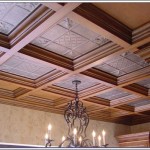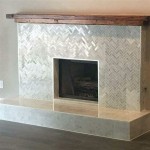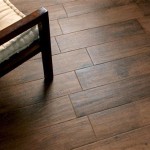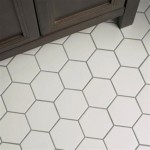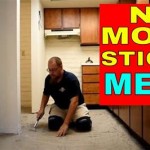Can I Tile Directly On Cement Board In Shower? A Comprehensive Guide
The question of whether tile can be directly installed onto cement board within a shower enclosure is a frequent point of inquiry for both professional contractors and homeowners undertaking bathroom renovation projects. Understanding the properties of cement board, its role in waterproofing, and the proper installation techniques is crucial in ensuring a durable and long-lasting tiled shower.
Cement board, such as Durock or HardieBacker, is a popular substrate material for tile installations in wet areas, including showers. It’s composed of cement, aggregate, and reinforced with fiberglass mesh, offering a stable and water-resistant surface. However, cement board itself is not inherently waterproof. This distinction is essential, as improper installation or reliance solely on cement board for waterproofing often leads to water damage and costly repairs.
The successful application of tile onto cement board in a shower hinges on several crucial factors. These include proper board installation, seam treatment, waterproofing measures, and the appropriate selection of adhesives and grouts. Neglecting any of these steps can compromise the integrity of the shower enclosure, paving the way for water penetration and subsequent structural problems.
Understanding Cement Board Properties and Limitations
Cement board is designed to provide a rigid and dimensionally stable substrate for tile. Its resistance to moisture and mold growth distinguishes it from gypsum-based drywall, which is unsuitable for wet environments. Cement board can withstand prolonged exposure to moisture without degrading or losing its structural integrity. This attribute is exceptionally valuable in shower applications where constant water exposure is expected.
Despite its moisture resistance, it's important to reiterate that cement board is not waterproof. It can absorb water, and if water penetrates the cement board and reaches the framing behind it, issues such as wood rot and mold growth can occur. Therefore, a separate waterproofing layer is paramount to protect the underlying structure.
The installation process is also critical. Cement board should be securely fastened to the wall studs with corrosion-resistant screws specifically designed for this purpose. The spacing of the screws should comply with the manufacturer's recommendations, typically every 6 to 8 inches. Insufficient fastening can lead to movement and cracking of the grout and tiles over time.
Furthermore, gaps between cement board sheets are inevitable during installation. These gaps must be properly treated to prevent water infiltration. Leaving the seams untreated allows water to seep behind the cement board, undermining the waterproofing system and leading to long-term damage.
Essential Waterproofing Methods for Shower Installations
Achieving a watertight shower enclosure requires implementing a reliable waterproofing system over the cement board. Several methods are available, each with its own advantages and disadvantages. The most common include liquid-applied membranes, sheet membranes, and waterproof seam tapes.
Liquid-applied membranes, such as RedGard or Hydro Ban, are brushed or rolled onto the cement board surface, creating a seamless waterproof barrier. Multiple coats are typically required to achieve the desired thickness and protection. These membranes effectively seal the cement board and prevent water from penetrating the substrate. The application process must adhere strictly to the manufacturer's instructions, paying close attention to drying times and coverage rates. Thorough coverage, particularly at corners, seams, and around plumbing fixtures, is essential for a successful outcome.
Sheet membranes, such as Kerdi-board or Schluter-KERDI, are thin, flexible sheets of polyethylene that are bonded to the cement board using a thin-set mortar. These membranes provide an immediate and reliable waterproof barrier. Sheet membranes are relatively easy to install, but require careful attention to detail, especially at seams and corners, where proper overlapping and sealing are crucial. The seams are typically sealed with a specialized sealant or tape, ensuring a watertight transition between the membrane sheets.
Waterproof seam tapes, often used in conjunction with liquid-applied membranes, are designed to reinforce and seal the joints between cement board sheets. These tapes are typically self-adhesive and waterproof, providing an additional layer of protection against water infiltration. They are particularly useful for treating corners, edges, and transitions where movement and stress are more likely to occur.
Regardless of the chosen waterproofing method, it's imperative to conduct a flood test before tiling. This involves plugging the shower drain and filling the shower pan with water to a level just below the curb. The shower should be left filled for 24 to 48 hours to check for any leaks. Finding and addressing any leaks before tiling is significantly easier and less costly than dealing with them after the tile installation is complete.
Tile Selection, Adhesives, and Grout Considerations
The type of tile selected for a shower installation can impact the overall performance and longevity of the tiled surface. While most types of tile are suitable for shower applications, certain materials are more porous than others and require additional sealing to prevent water absorption. Natural stone tiles, for instance, often require sealing to protect them from staining and water damage. Porcelain and ceramic tiles are generally less porous and require less maintenance.
The adhesive used to bond the tile to the cement board is equally important. A high-quality, polymer-modified thin-set mortar is recommended for shower applications. This type of mortar provides excellent adhesion and water resistance. It’s crucial to follow the manufacturer's instructions for mixing and application, paying close attention to the recommended water-to-powder ratio and open time. Using the wrong type of thin-set or applying it incorrectly can compromise the bond between the tile and the cement board, leading to loose tiles and water damage.
Grout fills the spaces between the tiles and helps to create a watertight surface. While grout is not inherently waterproof, it can be made water-resistant by using a high-quality epoxy grout or by sealing the grout lines with a penetrating grout sealer. Epoxy grout is naturally waterproof and highly resistant to stains and chemicals, making it an excellent choice for shower applications. Cement-based grout requires sealing to prevent water absorption and staining. Regular maintenance, including cleaning and re-sealing the grout lines, is essential to maintain the integrity of the shower enclosure.
Properly installing expansion joints is also a necessary consideration. Expansion joints are gaps strategically placed within the tiled surface to accommodate movement caused by temperature and humidity fluctuations. Without expansion joints, the tile may crack or debond from the substrate as the building expands and contracts. Expansion joints are typically filled with a flexible sealant that allows for movement without compromising the waterproofing system.
Furthermore, it is highly recommended to consult with a qualified tile installer or contractor to ensure that the shower installation is performed correctly. A professional installer has the experience and expertise to identify potential problems and implement the appropriate solutions. Improperly installed showers can lead to significant water damage and costly repairs. Investing in a professional installation can provide peace of mind and ensure that the shower is durable, watertight, and long-lasting.
In summary, while it is permissible to tile directly onto cement board in a shower, it is crucial to understand that cement board itself is not waterproof. A separate waterproofing system must be installed over the cement board to protect the underlying structure from water damage. Proper installation techniques, careful material selection, and regular maintenance are essential for ensuring a durable and long-lasting tiled shower enclosure. Neglecting these crucial steps can lead to costly repairs and potential structural damage.

How To Install Cement Board For Tile Bower Power

Installing Cement Board In The Bathroom Angie S Roost

How To Install Cement Board For Tile Bower Power

How To Install Cement Board For Tile Projects Diy Family Handyman

Easily Install Cement Board To Prep For Tile Installation

Tile Backer Board Breakdown Which One Is Best For Showers Diytileguy

Tile Installation Backer Board Around A Bathtub Family Handyman

Installing Cement Board In The Bathroom Angie S Roost

Tile Backerboard Material Options Fine Homebuilding

How To Install Durock Cement Board Making Maanita
Related Posts

